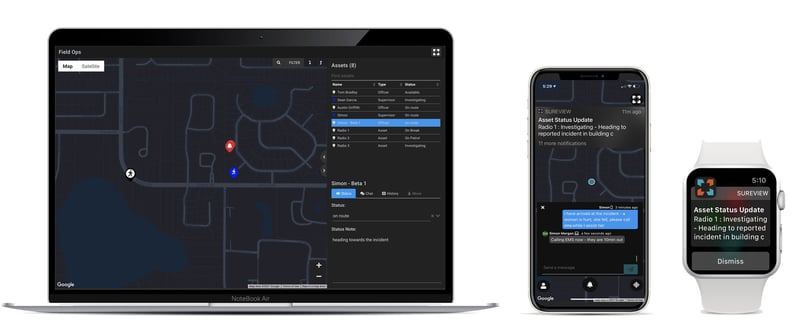SureView is featured in the May edition of ISJ (International Security Journal) magazine, the publication that delivers information, analysis, and insights, to senior security professionals.Tom Bradley, SureView’s Technical Director, was interviewed for The Last Word, and speaks about SureView Operations (Ops), the first cloud based PSIM offered on subscription. You can read more about Ops and its broad range of unique security solutions on ISJ’s Product Focus (page 19) in the same issue.
You can read the full interview at the ISJ Website
Tom Bradley, Technical Director, SureView Systems explains the key advantages of the company’s new SaaS platform.
You’ve recently launched a SaaS called SureView Operations, what is it?
SureView Operations—we call it Ops—is the first Next-Gen PSIM to be offered as a hosted service. It’s a simple-to-use response platform that gives operators a single, uniform interface to manage security events. Everything’s right there: action plans, geospatial mapping, nearby cameras, call lists, etc. It automatically prioritises every alarm and event that comes in from any system, device, or location. When they need help our Mobile App provides the real-time location and status of the entire field team. Mobile users can easily share valuable information from the scene, such as photos or videos and send these directly back and forth to the operations centre.
Why should an organisation look to deploy a SaaS (Software-as-a-Service) platform?
There are a few big advantages. First, by using the Cloud, customers no longer need to worry about managing and maintaining IT infrastructure or hitting the capacity limits of their hardware. New features and functions are immediately available—no waiting for maintenance windows to open. This in turn allows teams to focus on their core responsibilities—most importantly, rapid response. Secondly, Ops can be up and running in about a week and takes just hours for the team to learn. We concentrate on perfecting one region or department and then replicate that as we build out.
What are the business benefits?
Well, there’s the big benefit of being able to get started immediately, allowing organisations to achieve a rapid ROI. Then, there’s the advantage of scaling the operation so that a company can have almost infinite growth without being held back by its IT infrastructure. And, of course, the single view platform helps to create focus and has been proven to improve response time for the team. Finally, there’s no capital outlay because the service is a subscription.
How does an organisation get started?
We assign one of our engineers to work with you to understand your operation today and the challenges you need to address. The objective is to develop a mutually agreed FastTrack plan so that you can achieve your immediate goals and have Ops up and running within 30 days. To take a recent example, we helped a security company create a pop-up command centre for a music festival. In under 20 hours, we created action plans for everything from medical events, to critical security threats like assault. We mapped the site virtually then trained and set up table-top exercises with the operations and field teams so they’d be prepared for the event. Other than PCs for the operators and internet connectivity at the site, they didn’t need any other IT hardware. To get started, visit us at sureviewsystems.com to schedule a demo or set up a call.
What does the roadmap look like for SureView over the next 12 months?
I’m particularly looking forward to our embedded alarm analytics, where we can apply video analytics detection to any camera streamed through our platform. We’re working in partnership with beta customers for real-world feedback with a full launch that’s planned in a couple of months.
Beyond that, later this year we’re going to further leverage AI to identify trends and patterns in large data sets. For instance, it could identify an incoming alarm as a rare occurrence at a particular building at a certain time of day. Tagging this as an anomaly, the system automatically escalates the priority of this alarm, bringing it to the operator’s attention. What’s great about this type of analysis is that it can then be used to make real-time predictions. We just never know what’s around the corner so it’s an interesting challenge to try and stay one-step ahead.









